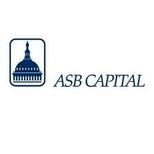 Author: ASB Capital
Author: ASB Capital
Covestor model: Large Cap Core Equity
Disclosures: None
During a quarter of unusual uncertainty, the equity markets hit new highs at the end of April, experienced a modest but persistent correction during May and most of June, and then rallied strongly at the close of June.
Coincidental or not, the correction began when the Federal Reserve chairman signaled the end of QE2 as scheduled at mid-year, even as a string of data revealed an economy much weaker than most expected. While the Fed deemed the pace of economic growth to be firm, it tempered its near-term GDP outlook.
In creating money to purchase bonds, did the Fed achieve its objectives? On the positive side, deflation seems to have been averted, stock prices are higher, and corporations can borrow at attractive yields. On the other hand, economic growth is lackluster, job creation is anemic, housing has not recovered, and consumer spending remains tepid.
On the whole, Fed policy gets a much higher score for stimulating the financial markets than the economy. Easy money, low interest rates, and a weaker dollar give speculators the green light to pursue risk. Meanwhile, it punishes savers and reduces the purchasing power of Middle America by inflating the cost of food, gas, clothing, and imports. Low interest rates also tilt corporate cost/benefit expansion analysis in favor of capital at the expense of labor.
The “wealth effect,” except for a few on the high end, did not translate broadly into economic gains due to a misdiagnosis of the situation. The “deflation” was really the market attempting to find equilibrium and eliminate excess debt and pockets of oversupply (housing) so that capital could be allocated more efficiently and growth resume. Printing money and adding even more debt makes the ultimate balance sheet adjustment all the more daunting. While the debt remains, the palliative effect on markets and interest rates will presumably wane.
Meanwhile, fiscal policy is growing tighter even prior to the resolution of the Federal debt ceiling extension negotiations. State and local spending declined significantly in the first quarter, the most sizeable contraction in decades. At the Federal level, notwithstanding heated debate about the particulars, all now agree that significant spending cuts must be included in future budgets.
In a similar, but more serious situation in Greece, the possibility remains that financial issues could result in more geographically-widespread economic instability.
Our Equity Investment Strategy
The broadly-anticipated acceleration in second half economic growth will be a challenge given the current modest and downwardly trending pace of expansion, the debt overhang, and the pending withdrawal of monetary and fiscal stimulus. Any upward surprises may be driven by a post earthquake rebound in Japanese production (particularly in the auto and electronics sectors) and the utilization by corporations of tax incentives for capital expenditures made prior to year end.
Taken at face value, consensus earnings expectations for the equity market imply that valuations on an absolute basis are reasonable and even compelling when compared to the level of interest rates.
Corporate earnings remain strong, with profit margins at elevated levels and top line growth picking up. However, continued revenue growth and the maintenance of margins depend largely upon the ability to pass rising input costs along to the consumer, who may be unwilling or unable to absorb price hikes. Also, slowing manufacturing activity in China may further cool the commodity sectors of the market.
Our multi-factor approach to portfolio construction combines both individual company analysis and macro economic analysis in order to identify good investment opportunities and control risk. A straight-line projection of recent earnings indicates opportunity. However, our top-down analysis indicates that the recovery sits atop a shaky foundation of easy money and deficit spending. This brings into question the sustainability of recent improvement, and suggests high risk of market tremors.
Our portfolio continues to be defensively positioned due to the possibility that a slowing economy, tapped out consumer, and the effect of still-high commodity costs will lead to downward earnings revisions in the second half. We believe the companies that we own should perform relatively well regardless of the economy as a result of their size, product breadth, global diversification, strong finances, leading market positions, good growth prospects, and attractive valuations.
Specifically, we are overweight the consumer staple and health care sectors, which tend to exhibit consistent demand growth. With the exception of energy, where we are market weight, we are underweight the industrial and commodity sectors, which are more dependent upon global economic strength. As may be expected, cyclical stocks performed strongly in the market through April, but more defensive names stood out during the ensuing two months.
We maintain our financial sector underweight. Despite low interest rates, the large financial institutions that contributed to the financial crisis remain laden with questionable loans and collateral and may not have adequate reserves. In addition, greater regulation and capital requirements, the decline of formerly lucrative business lines, and sluggish demand for loans will make it difficult for big banks to grow at anything resembling their former pace.
Finally, we remain overweight the technology sector. In addition to sharing the positive general characteristics of the rest of our portfolio, our technology names are at the center of the relentless advance of computing and communication power that is driving productivity and new consumer applications. Also, the outsized amount of cash held by these companies could add shareholder value should the weak economy spur tax-advantaged repatriation of cash held overseas. We expect our technology holdings’ positive reward/risk profiles to contribute to portfolio performance over time.



